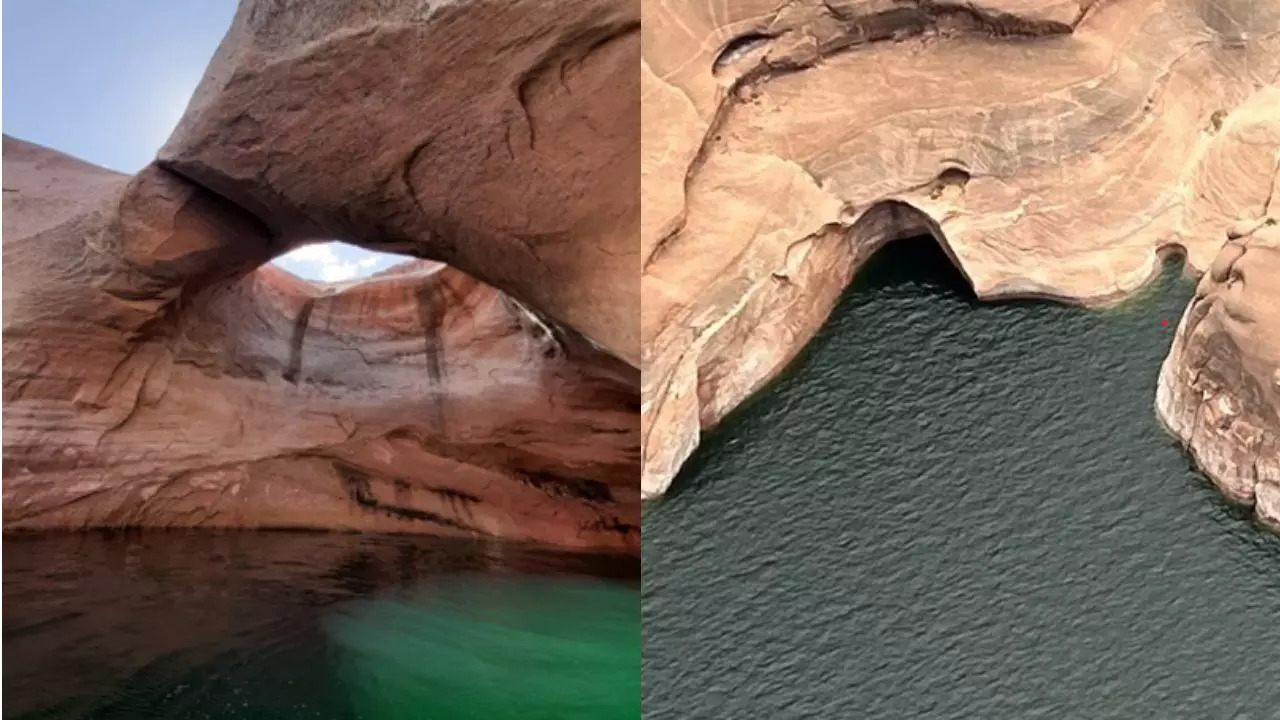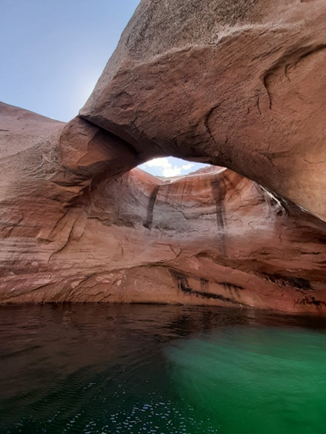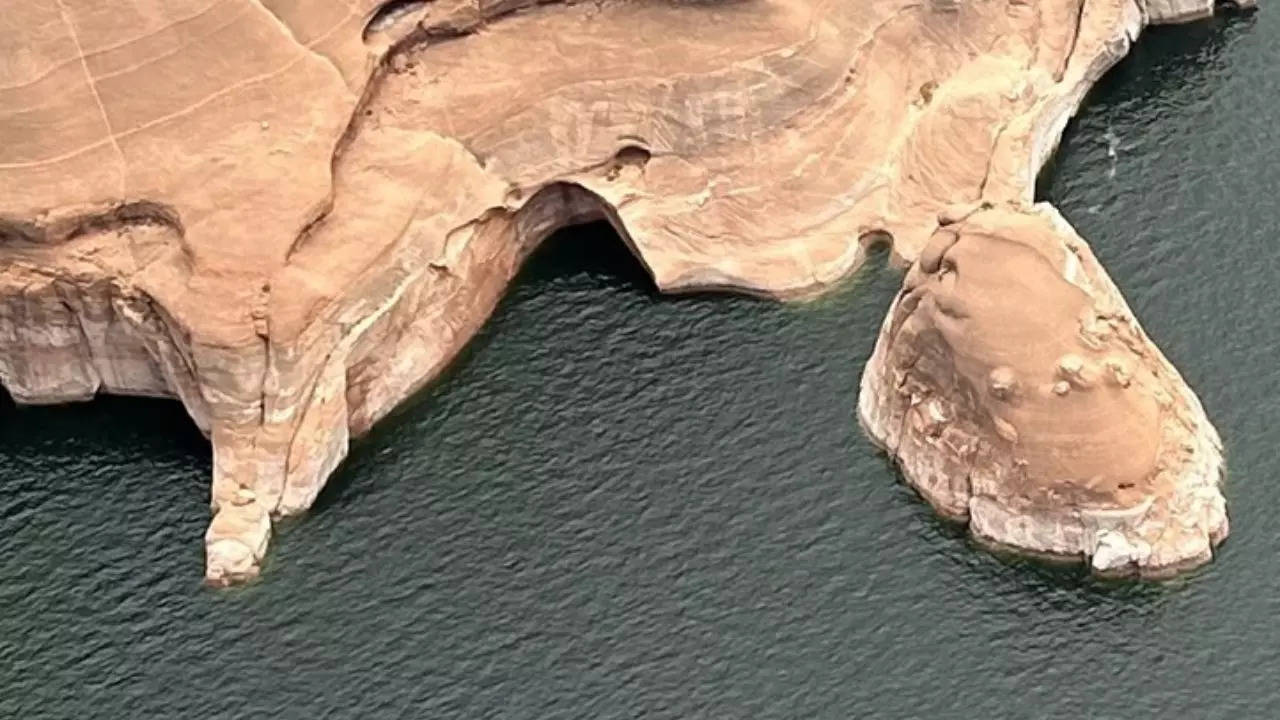
Before and after photos of Double Arch in Utah. Credit: National Park Service
Utah It has long been loved for its otherworldly scenery and rock formations. But recently, it suffered a major loss of its natural heritage, when the iconic Double Arch, a landmark almost synonymous with the region, collapsed into Lake Powell.
The collapse of this natural wonder has sent shockwaves through the community and beyond. The Double Arch, often called the “Toilet Bowl” because of its unique shape, was a testament to the incredible forces of nature that shaped the American Southwest. Its twin arches, perfectly balanced against the vast expanse of sky, had become a symbol of the region’s natural beauty.

What are double arches?
Double Arch is named for its unique structure: two distinct arches sharing a common sandstone foundation. Unlike many other arches formed by lateral erosion, Double Arch was sculpted by water gradually wearing away the rock from above, creating a fascinating geological wonder.

The United States is a delight for arch enthusiasts, boasting thousands of these natural wonders across its diverse landscapes. While Utah Arches National Park Certainly a show-stopper with over 2,000 documented arches, the magic extends far beyond to the towering spires of Canyonlands and hidden gems nestled in lesser-known corners.
Why did it collapse?
While the collapse is certainly a harrowing event, arches, like all geological formations, are constantly evolving, shaped by the relentless forces of wind, water and time. The disappearance of the Double Arch is an illustration of this ongoing process.
“It’s a natural process in the lifespan of an arch,” Jeff Moore, a professor of geology at the University of Utah who led a team monitoring several arches in Arches National Park since 2013, told USA Today.

The National Park Service, in a statement, cited Glen Canyon National Recreation Area Superintendent Michelle Kerns: “This event serves as a reminder of our responsibility and need to protect the mineral resources surrounding Lake Powell. These features have a lifespan that can be impacted or damaged by man-made interventions. While we do not know what caused this collapse, we will continue our efforts to protect the resources at Lake Powell for future generations to enjoy. Enjoy our resources, but leave no trace.”
The statement, while not citing any particular reason, believes a combination of factors contributed to the arch’s collapse. Rising water levels at Lake Powell, caused by increased runoff and dam operations, have put significant pressure on the surrounding rock formations. In addition, the natural process of erosion, which had sculpted the arch over millions of years, ultimately led to its structural failure.
Disclaimer:
The information contained in this post is for general information purposes only. We make no representations or warranties of any kind, express or implied, about the completeness, accuracy, reliability, suitability or availability with respect to the website or the information, products, services, or related graphics contained on the post for any purpose.
We respect the intellectual property rights of content creators. If you are the owner of any material featured on our website and have concerns about its use, please contact us. We are committed to addressing any copyright issues promptly and will remove any material within 2 days of receiving a request from the rightful owner.
